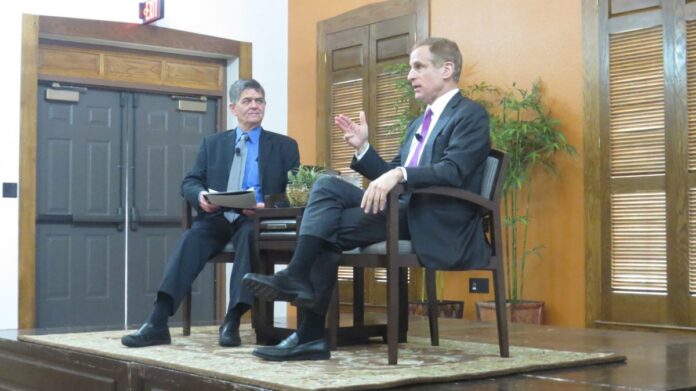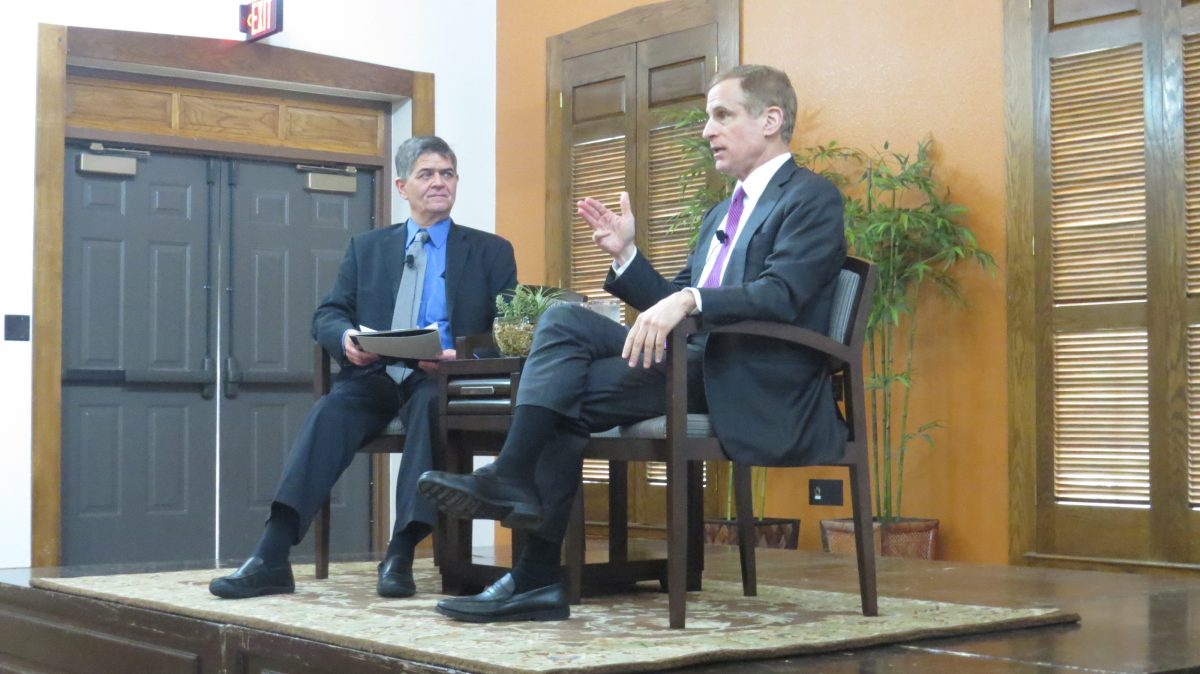Basic Economics
Dallas Fed Chief urges more workforce growth, GDP improvement
BY STEVE CLARK
STAFF WRITER
BROWNSVILLE — One good reason for immigration reform comes right down to basic economics.
Robert Steven Kaplan, president and CEO of the Federal Reserve Bank of Dallas, drew a straight line between the two during a moderated discussion with U.S. Rep. Filemon Vela, D-Brownsville, at the University of Texas Rio Grande Valley Brownsville campus.
It all comes down to workforce growth, which is slowing in Texas and the United States due to an aging population, Kaplan said yesterday.
This affects the Gross Domestic Product — the total value of finished goods and services produced — of the state and the nation, he said.
Kaplan said the country’s GDP grew by 3 percent last year but is expected to grow more slowly this year, closer to 2.25 or 2.50 percent. Sluggish GDP growth, in turn, makes the country’s rising level of debt increasingly unsustainable, he said.
In January the national debt stood at nearly $22 trillion, an increase of $2 trillion over the previous two years.
One of the reasons behind a projected weaker GDP is that the workforce is growing more slowly, he said. A nationwide “skills gap,” meanwhile, is making it difficult for employers coast to coast to fill jobs, Kaplan said.
“Half of all small businesses in this country report that they can’t find skilled workers,” he said.
Texas employers are feeling it. The state’s workforce challenges are exacerbated by the fact that the state lags behind the nation in math, science and reading, while the United States itself is ranked 25th in math, science and reading out of 35 industrialized nations, Kaplan said.
While “Texas has a lot of good success stories” in addressing its workforce issues, “every one of these skilled jobs that goes unfilled just lowers GDP,” he said. Reforming U.S. immigration policy in a way that helps address the country’s weakening workforce makes sense, Kaplan said.
“Our research at the Dallas Fed shows that immigrants and their children have made up over half the workforce of this country the last 20 years,” he said. “We think immigrants are likely to make up a much higher percentage of workforce growth in this country over the next 20 years.”
The reason is because the native-born workforce is going to shrink, Kaplan said.
“Immigration is a very critical supplement,” he said. “At the Dallas Fed we’ve actually done a lot of research and we have said publically that research indicates the country would be well served if we restructure our immigration system to be more skill based and employer based.”
That means gauging employers’ needs and then incorporating those needs and then “backward integrating” those considerations into immigration system’s criteria for admitting foreign national applicants, Kaplan said.
“Immigration is a key component of workforce growth in this country and GDP growth,” he said.
While avoiding the political argument over immigration, it should be acknowledged that sluggish GDP growth is due in part to slowing growth in the native workforce, Kaplan said.
“We ought to at least be talking about the pros and cons, and how we should be doing immigration, if we want to want to grow faster, particularly given how highly leveraged we are at the government level,” he said. “And if we don’t grow faster we’re just going to make this path of government debt more unsustainable.”







